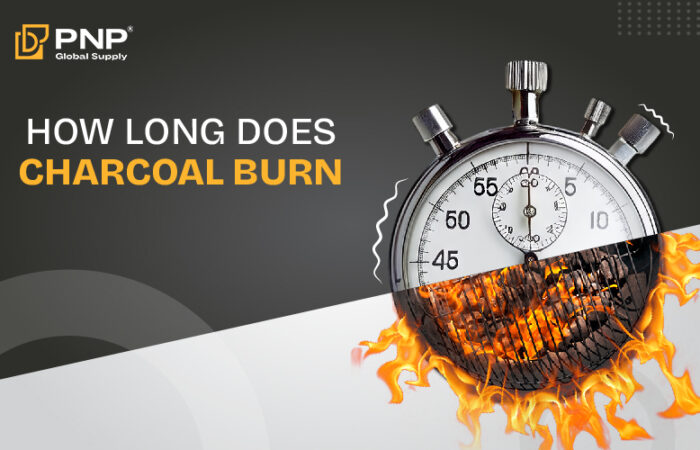Learning how to arrange charcoal correctly can make a significant difference in your cooking results. Arranging charcoal ensures even heat distribution, better control over cooking temperatures, and optimal fuel efficiency. Whether you’re grilling, smoking, or using a charcoal oven, mastering this skill is essential for any outdoor cooking enthusiast. Keep reading to discover the best techniques and tips for arranging charcoal to elevate your cooking game.
Why Does Charcoal Arrangement Matters
It’s a crucial step to arrange charcoal correctly as it ensures efficient and effective cooking. Proper charcoal arrangement can significantly impact the temperature control, cooking duration, and overall flavor of your food. By taking the time to arrange your charcoal properly, you can achieve consistent heat distribution and avoid hot spots or flare-ups.
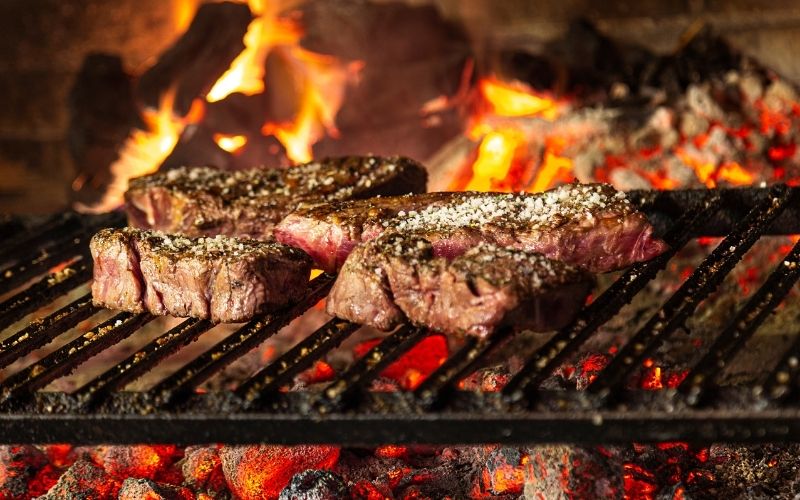
Here are the key benefits of proper charcoal arrangement:
- Consistent Heat Distribution: Ensures even cooking by preventing hot spots and cold areas on the grill.
- Temperature Control: Allows for better control over cooking temperatures, making it easier to achieve the desired doneness of your food.
- Fuel Efficiency: Optimizes the use of charcoal, reducing the amount needed and saving costs.
- Flavor Enhancement: Promotes even burning of the charcoal, which contributes to a more consistent smoky flavor in your food.
- Reduced Flare-Ups: Minimizes flare-ups caused by dripping fats and oils, leading to safer and more controlled cooking.
- Extended Cooking Time: Proper arrangement can extend the burn time of charcoal, allowing for longer cooking sessions without needing to add more fuel.
Proper charcoal arrangement enhances cooking by ensuring even heat distribution, precise temperature control, and richer flavors. It improves fuel efficiency, reduces flare-ups, and extends cooking durations, making it essential for achieving consistent, delicious results in grilling, smoking, or using a charcoal oven.
Direct Heat vs. Indirect Heat
Before diving into the best ways to arrange charcoal for cooking, it’s required to understand the difference between direct vs. indirect heat. Direct and indirect heating methods are essential for achieving different cooking results when grilling.
- Direct heat involves placing food directly over the hot coals. This method utilizes radiant heat, which quickly sears the exterior of the food, creating a flavorful crust. Additionally, conductive heat from the grill grate contributes to the formation of distinctive grill marks.
- On the other hand, indirect heat positions food away from the coals, often with the grill lid closed. This method relies on convection heat circulating around the food, similar to an oven. It’s ideal for cooking large cuts of meat or delicate items that require slower, more even cooking without direct exposure to intense heat.
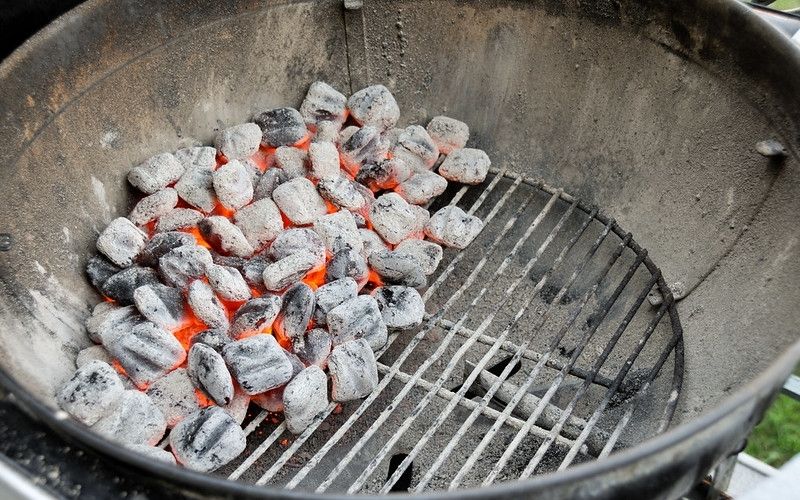
Choosing between direct and indirect heat depends on the type of food and desired cooking outcome, influencing how you arrange your charcoal for optimal grilling results.
How to Best Arrange Charcoal for Cooking
How to arrange charcoal depends on what dish you’re making. Below are different methods tailored to various cooking needs. Choose the one that suits your cooking preferences best!
Direct Fire
A direct fire is the most common way to arrange charcoal, where a batch of lit charcoal is evenly spread across the charcoal grate. This setup offers ample grilling space, allowing you to utilize the entire cooking grate with relatively even heat distribution. It’s ideal for searing burgers, fish, sliced veggies, and other foods quickly and efficiently.
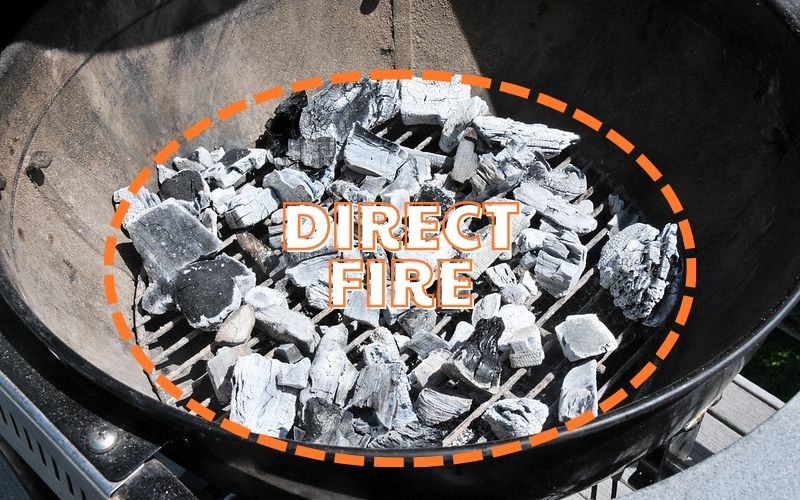
While there may be slight temperature variations, the expansive heat coverage makes it versatile for various grilling tasks.
Two-Zone Direct Fire
Sometimes you require direct heat but not uniformly intense heat—that’s where the two-zone direct fire method is useful. It involves stacking a higher concentration of coals on one side and scattering fewer coals on the other. This setup is ideal for foods like steak, which benefit from an initial sear followed by gentler heat to finish cooking.
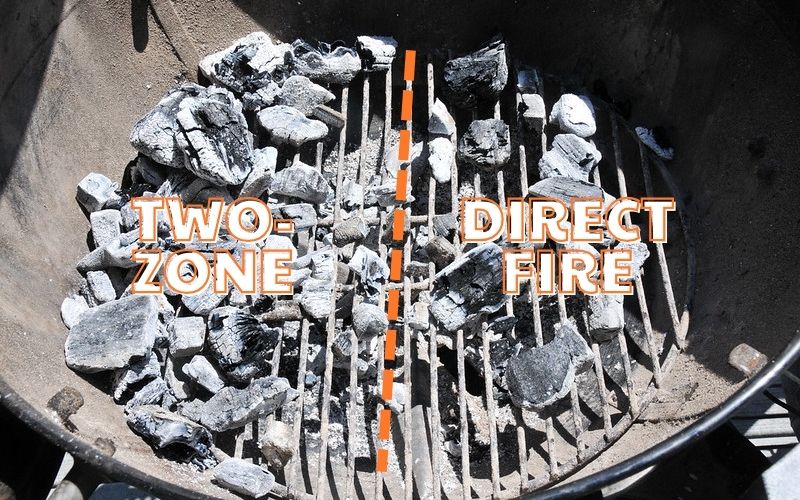
This arrangement is beneficial because it allows you to move food between the two zones, ensuring a well-seared crust while maintaining control over the cooking process for precise doneness.
Two-Zone Indirect Fire
When you don’t need high-speed cooking, the two-zone indirect fire setup is your go-to. To arrange charcoal with this method, start by placing all the coals on one side of the grill, leaving the other side empty to create zones for both direct and indirect heat. This method is perfect for cooking roasts, whole birds, ribs, or any dish that requires longer cooking times with gentle heat.
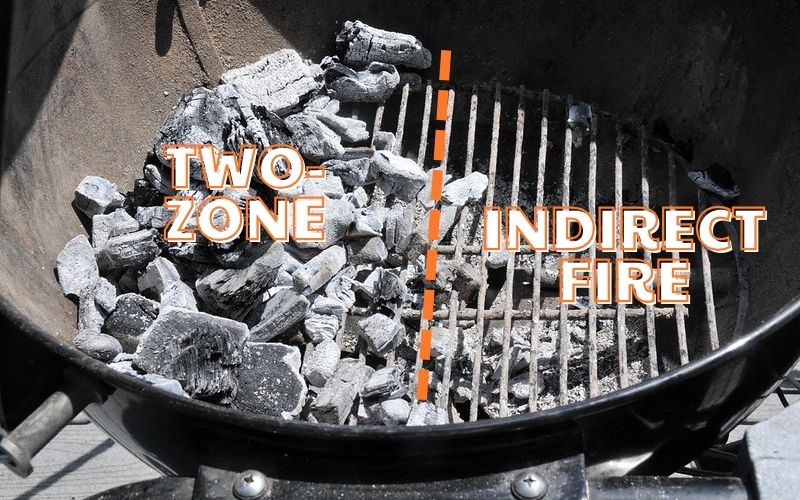
However, be cautious with this setup as one side of the food will be closer to the coals than the other. Remember to rotate the food about four times during cooking at regular intervals to ensure even cooking throughout.
Three-Zone Split Fire
Similar to the two-zone fire setup, the three-zone split fire arrangement involves placing two equal piles of coals on either side of the charcoal grate instead of just one side. While this setup reduces the indirect cooking space slightly, it’s ideal for smaller items like chickens and pork loins.
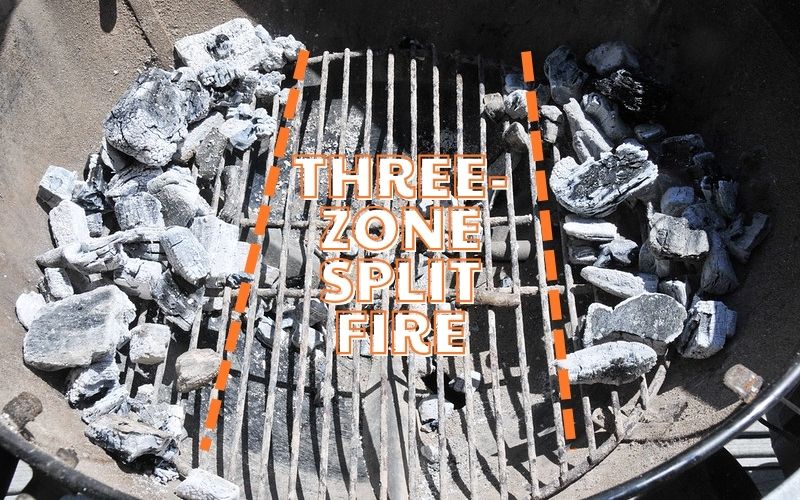
Placing the food in the middle of the grill ensures even heat distribution on both sides, eliminating the need for rotating during cooking. This setup also speeds up the cooking of smaller indirect items since minimizing lid openings prevents heat from escaping.
The Ring of Fire (The Snake Method)
The Ring of Fire method stands out with its straightforward approach to arranging charcoal. Place your coals along the outer edge of your smoker, leaving the center empty. This technique is often preferred with briquettes for their stackability compared to charcoal.
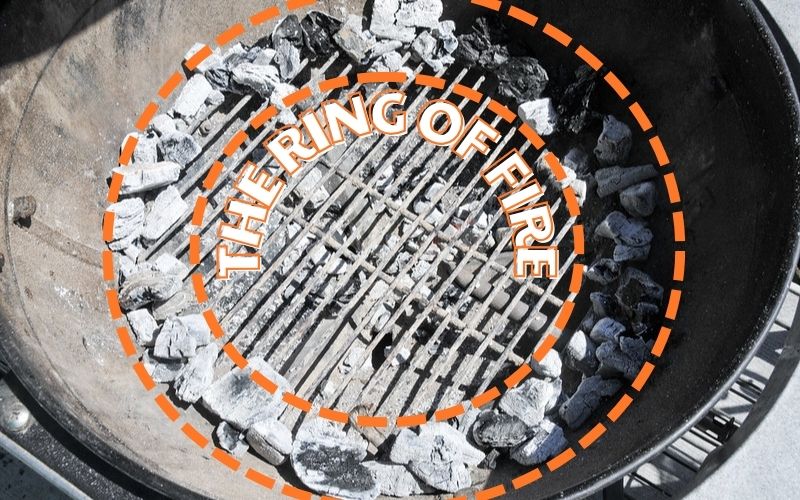
Ensure there’s a gap in the ring to ignite your charcoal or briquettes. As one lights up, it spreads to the next in the ring, creating a chain reaction. You can ignite one end to let the coals burn across, or light both ends for flames to meet in the middle.
Bull’s Eye
The Bull’s Eye method is the opposite of the Ring of Fire. Here, you arrange charcoal in a mound at the center of the grill, leaving the outer edges empty. This setup creates a large area of direct heat in the center and indirect heat around the perimeter.
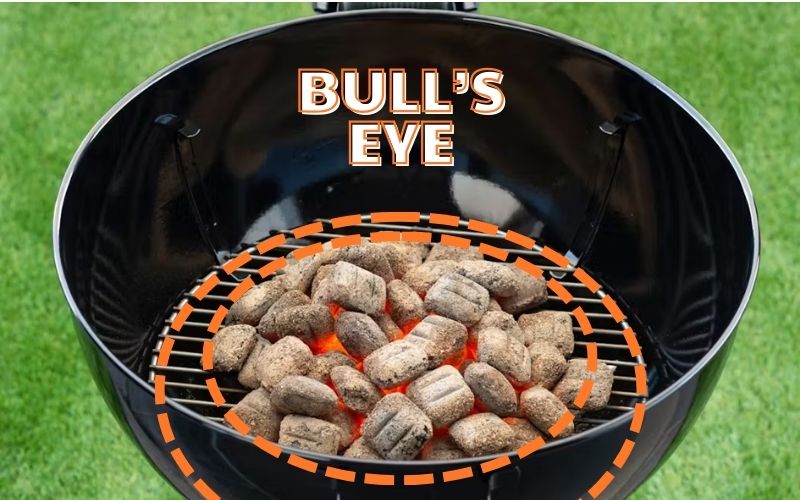
A small indentation is made in the middle of the charcoal mound to add a few pre-lit coals. These lit coals gradually spread outward and downward, igniting the entire charcoal mound.
The Minion Method
The Minion method, pioneered by barbecue competitor Jim Minion, emerged from practicality and coincidence. After setting up his Weber Smoker, he emptied unlit coals into the charcoal chamber and scattered a few hot coals evenly on top. He regulated airflow through the bottom vents to maintain a low and slow burn. Throughout cooking, the remaining coals gradually ignite, allowing for extended cook times of up to 18 hours.
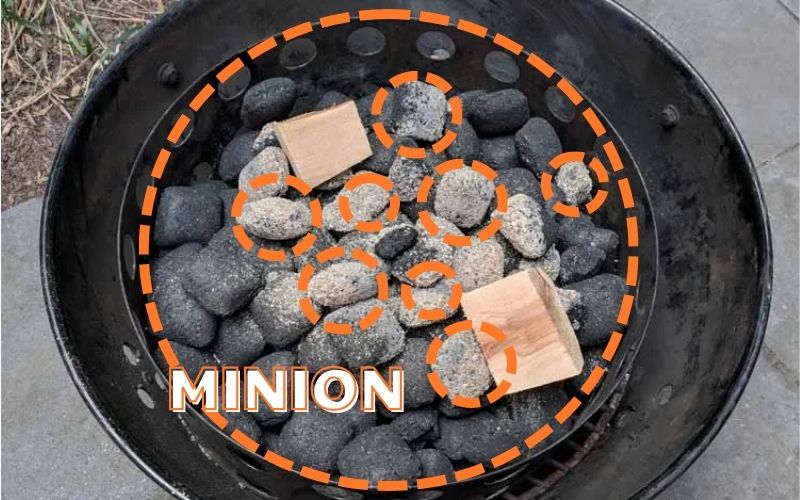
For similar results, charcoal can be mixed periodically to ensure even burning. However, this approach is messier and potentially hazardous, requiring careful handling of hot grates and charcoal. Weber advises against moving a hot cooker and recommends ensuring all grill components are in place before operation. Therefore, exercise caution when mixing charcoal.
Common Mistakes to Avoid with Charcoal Arrangement
To ensure the best cooking results with charcoal, avoiding these common mistakes is crucial:
- Using too much or too little charcoal: Finding the right amount of charcoal is key. Too much can lead to overheating and burnt food, while too little may not provide enough heat for proper cooking.
- Ignoring the importance of airflow: Proper airflow is essential for controlling temperature and ensuring even cooking. Without it, you risk uneven heat distribution and longer cooking times.
- Not preheating the grill: Preheating allows the grill to reach the desired temperature, which helps sear food properly and prevents sticking. Skipping this step can result in food that cooks unevenly or sticks to the grill grate.
Mastering these fundamental aspects will elevate your charcoal cooking skills, ensuring consistently delicious results with every barbecue session. Remember, attention to these details enhances flavor, texture, and overall cooking efficiency.
Conclusion
Knowing how to arrange charcoal is key to achieving the best cooking results. By mastering these techniques, you can ensure your food is cooked evenly and efficiently. Remember, the right arrangement can make all the difference. For more tips and insights on charcoal use and techniques, follow PNP Charcoal for valuable information and updates.


